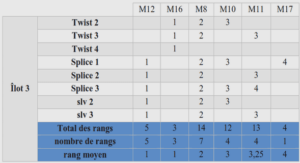GLOBAL REFLEXION ABOUT SLUMS
The multiplicity of ways to approach slums reflects the complexity of these settlements. There have been many attempts to define slums, using a large range of words and expressions but the definitions are continuously being questioned, highlighting the uniqueness of the slum and its socio-spatial evolving environment. The term slum qualifies in a very imprecise manner a complex and moving reality. Originally meaning « a bleak or destitute place », the word slum is generally used to designate an urban residential area marked by substandard housing and often developed outside the legal or administrative planning frameworks (Lévy and Lussault, pp 438-439). The phenomenon of slums, predominantly significant in metropolises of emerging countries, raises a major development challenge illustrating inequalities and a non-control of the urban growth. Initially derived from the lack of affordable housing near the job areas -or due to an inadequacy of the housing to the practices and constraints of the population with precarious living conditions- the slum is developed by its inhabitants and both the housing and infrastructure are constructed outside the usual market and public service mechanisms. These areas are often highly populated, tight and built by « non-skilled persons » in areas unsuitable for living, implying health, environment and social issues. Frequently illegal, the informal settlements appears to be a stigma of poverty associated with the informal sector. It is also sometimes considered as a form of contemporary vernacular architecture (Petropoulou 2007; Fathy, 1970; Berenstein Jacques, 2001).2 Several terms are associated with poor housing conditions; most prevalent are the terms slum, informal settlement or squatter settlement. The differences between these words arise mainly from the nature of settlements to which they refer. The expression informal settlement emphasizes the unplanned nature of these settlements, whereas squatter settlement refers to the illegal occupation of lands or structures by the inhabitants. The expression spontaneous settlement is sometimes used to highlight the initiative of the populations who themselves have built their houses. These terms are increasingly synonymous for slums (e.g. UN‐Habitat 2003). In addition, they are not mutually exclusive categories, i.e. an informal settlement could also be a squatter settlement (Patel, 2012).
Informal or clandestine settlement
residential area which does not meet the legal standards of the property, construction or equipment. (Le Tellier and Iraki, 2009) Squatter settlement: residential area which has developed without legal claims to the land and/or permission from the concerned authorities to build; as a result of their illegal or semi-legal status, infrastructure and services are usually inadequate.3 Spontaneous settlement: hutting areas with huts erected in a haphazard manner without proper access, without protected water supply and drainage arrangements and so congested as to allow of little free flow of air to get in. Although the term ‘spontaneous’ suggests no forethought or planning, many such clandestine settlements are the results of ‘planned invasions’ by the initial occupants, who subdivide the land on a pre-arranged cadaster and provide a basic infrastructure (Gerbeaud, 2012). Many other appellations are used interchangeably with slums, according to the country and often referring to different aspects or characteristics of slums: bidonvilles in former French colonies (e.g. Cameroon), ghettos (e.g. United States), shantytowns, slums or squatter settlements in formerly British colonies (e.g. India), favelas (e.g. Brazil), etc. In India, the slums are often given local names: jhopad pattis in Mumbai, jhuggi jompri in Delhi, cheri in Chennai (Saglio-Yatzimirsky, Landy, 2014, p20.). These terms usually reflect a pejorative content which contributes to stigmatize the areas and the population living in them. The diversity of terminology to name the zones of illegal occupation is significant of the historical and local processes of stigmatization (Racine, 1997). Basically, regardless of the term used, three criteria are attached to these areas (Racine et al., 1999): their illegality, their unhealthy condition and their specific culture (Saglio-Yatzimirsky, Landy, 2014). In this report, the word “slum” is used only in reference to squatter settlements where the land is occupied illegally, and not in the broader sense of precarious forms of housing and poor shelters. It does not deal with Indian “unauthorized colonies” nor with the run-down formal dwelling that are numerous in the centres of megalopolises (Saglio-Yatzimirsky, Landy, 2014).



